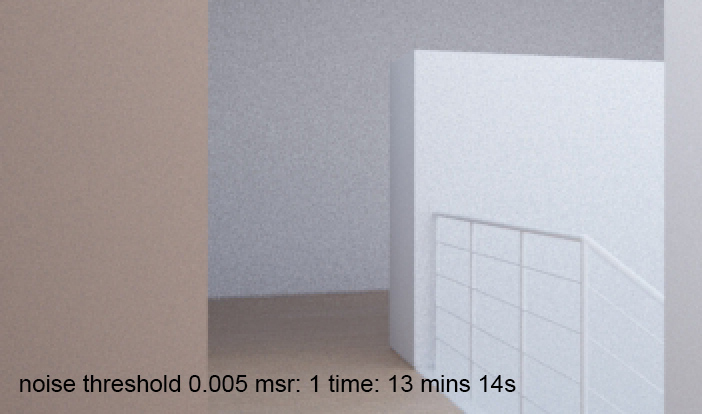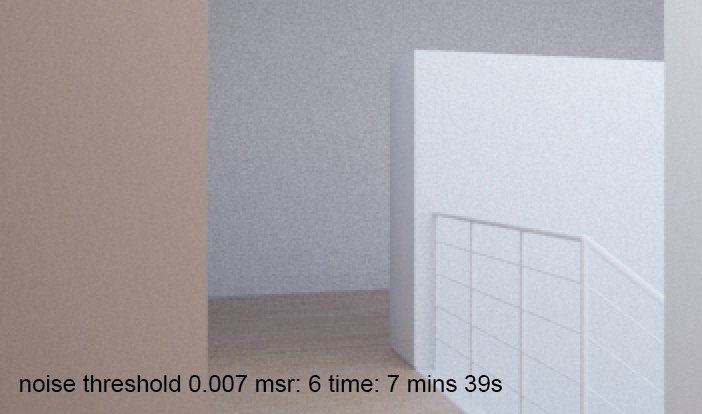With Vray 3.0, a new parameter has appeared under 'image sampler' called min shading rate. Inspired by some interesting discussion on the forum, I thought I'd find out what it does.
From help.chaosgroup.com :
"Min shading rate - this option allows you to control the number of rays shot for AA versus rays for other effects like glossy reflections, GI, area shadows etc. It is especially useful with the Progressive image sampler. Higher values mean that less time will be spent on AA, and more effort will be put in the sampling of shading effects.
When loading scenes saved with V-Ray 2.x, the Min shading rate parameter is set to 1 in order to produce the same results as the previous V-Ray versions."
So.. as far as I understand it, it allows you to re-balance the work vray is doing away from AA (geometric detail, textures) and back to, ummmm all the other stuff (GI, lighting, reflections etc). That's as far as I get without my brain starting to hurt, so lets try it out in practice.
(click for bigger) (for those interested, a shading rate of 20 took 15mins 46s)
The settings are all as per the vray universal settings and a noise threshold of 0.005, all I am doing is increasing the min shading rate from its default of 1.
As you can see, higher values don't necessarily mean longer render times in the world of adaptive sampling, presumably because the AA has less work to do as the GI, lighting, reflections and whatever else are cleaner. Don't ask me to explain this any further, I can't!
What is interesting to me though, is that at the shading rate of 6, not only is it faster, it is also less noisy. (marginal I know!)
With that in mind, and with the object for me being to reduce the render time, I increased the noise threshold slightly to 0.007.
So in summary, a reduction of render time from 13 mins 14s down to 7 mins 39s, and looks pretty much identical. I'd guess that this approach will work best with interiors but let me know if you have any success with exteriors.
EDIT: same testing procedure on an exterior scene below, as expected, not as much of a difference as with the interior.






